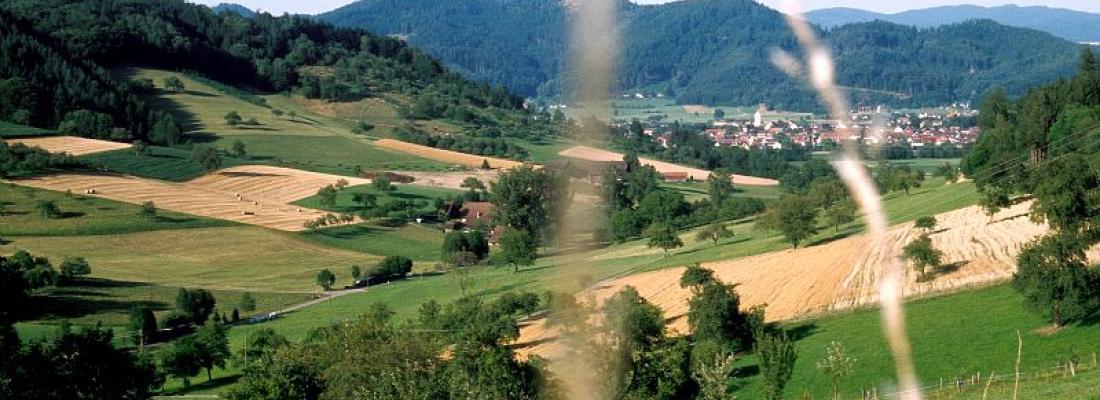Agroecology Reading time 5 min
Evaluating the impact of agricultural policies on the environment
Published on 01 September 2022

Although agriculture’s primary function is the production of food, feed, fibre, fuel and other goods of value to society, it is also likely to affect human health and ecosystem integrity (e.g. greenhouse gas emissions, biodiversity loss or how the mining of certain resources is managed, etc.). In recent years, considerable efforts have been made to reduce its negative environmental impact through the introduction of innovative and sustainable practices, some of them driven by agricultural policies at the national or European scale.
Assessing these policies is a major challenge. Numerous assessment approaches and sustainability indicators have been produced since the 1990s, resulting in four main methods: Agro-Environmental Indicators, which reflect states and trends in the environmental impacts of agriculture (e.g. water pollution); Life Cycle Assessment, which focuses on product chains and assesses their impact considering both resource use, pollutant emissions and land use; Ecosystem Services Analysis which studies the links between ecosystem structures, functions, ecosystem services and the associated benefits for humans; and finally Yield Gap Analysis, which evaluates the quantities produced versus food production capacity per hectare of land. These approaches offer different points of view regarding the environmental sustainability of agriculture.
In the context of TempAg – The International Sustainable Temperate Agriculture Network – INRAE’s Directorate for Scientific Expertise, Foresight and Advanced Studies (DEPE) was commissioned to study the possibility of developing a unified framework to assess the environmental effects of European Union agricultural policies. This was the first international study to have been carried out by the DEPE. Working with their colleagues, Audrey Bethinger, DEPE, study coordinator, and Jacques-Eric Bergez from the Joint Research Unit for AGroecology, Innovations and teRritories (AGIR), the study’s scientific manager, set up a system to analyse the feasibility of such a framework. We interviewed them both.
The TempAg network
TempAg is an international, collaborative research network set up to enhance the impact of agricultural research in temperate regions of the world. Created in April 2015 with support from the OECD Global Science Forum, the activities of the network are coordinated by the Global Food Security programme and INRAE.
Through its work, the network aims to:
- increase the impact and return on investment of national research programmes in temperate agriculture;
- enable dissemination and alignment of existing and new research and technology;
- identify areas of research fields relevant to science & policy which are currently not addressed at an international level.
Jean-François Soussana, Vice-President for International Policy at INRAE, is a member of the TempAg Governing Board.
What approach did you adopt during your study, and how was it original?
“We decided that a French scientist from INRAE who was expert in one of the sustainability assessment methods would work in tandem with a similar expert from another country.
The French experts carried out the initial work on the usefulness of unifying the four methods to assess the sustainability of agricultural systems. This work confirmed the value of the study and laid foundations for a good group dynamic. They were then joined by their international counterparts for more collective efforts, combining mind maps and brainstorming. We were thus able to progress rapidly in terms of the concepts and applicability of our study. More generally, this approach forged stronger links within a community that demonstrated its resilience during the COVID pandemic.”
What are the principal outcomes?
“Our results concerned three areas. First of all, we were able to establish a conceptual framework on which to base our assessment of European Union agricultural policies. Within this framework, the global system was represented by four subsystems: the farming world as opposed to the non-farming world and the socioeconomic system as opposed to the ecological system. It was then possible to imagine four interacting and exchanging compartments (flows of materials, organisms, policies, etc.).
We then built a list of sustainability indicators to assess the global system and positioned these indicators within the conceptual framework. By mobilising the four assessment methods, the list of indicators was much more wide-ranging that what could have been produced using a single method.
Finally, we were able to show that a complementary vision of the four assessment methods enabled a more complete assessment of the system and the impacts of a particular policy.
Based on this, we worked on a demonstration case combining agricultural and environmental issues, encouraged by European agricultural policies and well documented: the introduction of nitrogen fixing cover crops in the context of the European Nitrates Directive 91/676/CEE of 12 December 1991, designed to reduce the pollution of water by nitrates of agricultural origin. An integral part of the EU Water Framework Directive (WFD), this is one of the key instruments used to protect water against agricultural pressures.
We first of all identified the different indicators linked to the four subsystems, and then showed that the complementarity of the methods enabled a more global view of the effects of an agricultural policy and a more detailed analysis, the idea being that better informed decisions could be taken in the future.”
What are the perspectives for your work?
“Insofar as it is important for policymakers to be able to assess the effects of public agricultural and environmental policies with a view to their revision and improvement, the perspectives for this work are considerable. They include the fact that this approach is becoming truly operational, although several steps still need to be taken to achieve this, including exploring the data to be mobilised in order to identify deficiencies and thus collect this information. The potential for this unified framework is clear, and the challenge is essential.”
Reference
Bergez J.E., Béthinger A., Bockstaller C. et al. (2022). Integrating agri-environmental indicators, ecosystem services assessment, life cycle assessment and yield gap analysis to assess the environmental sustainability of agriculture. Ecological Indicators, 141, 109107.
